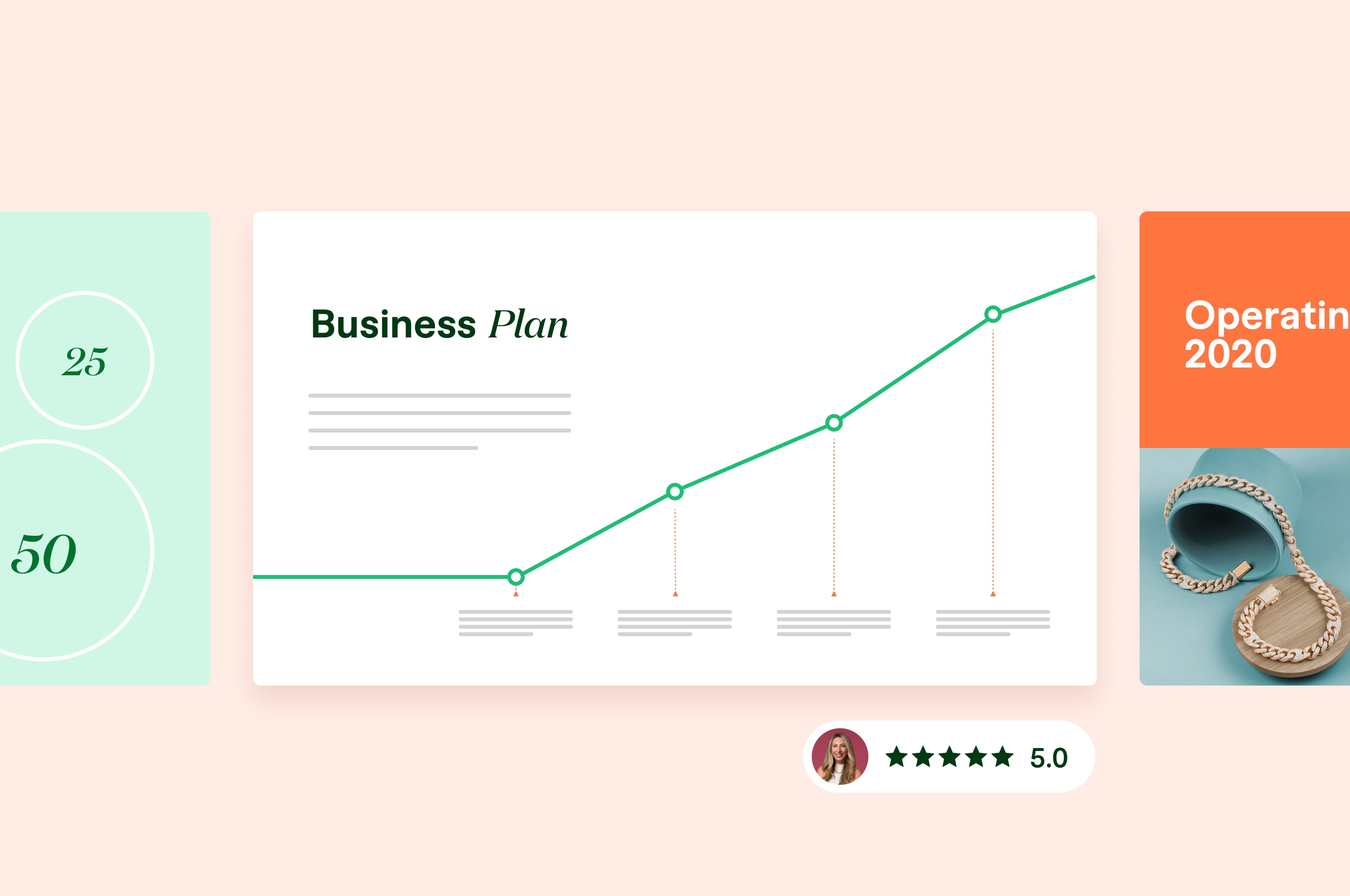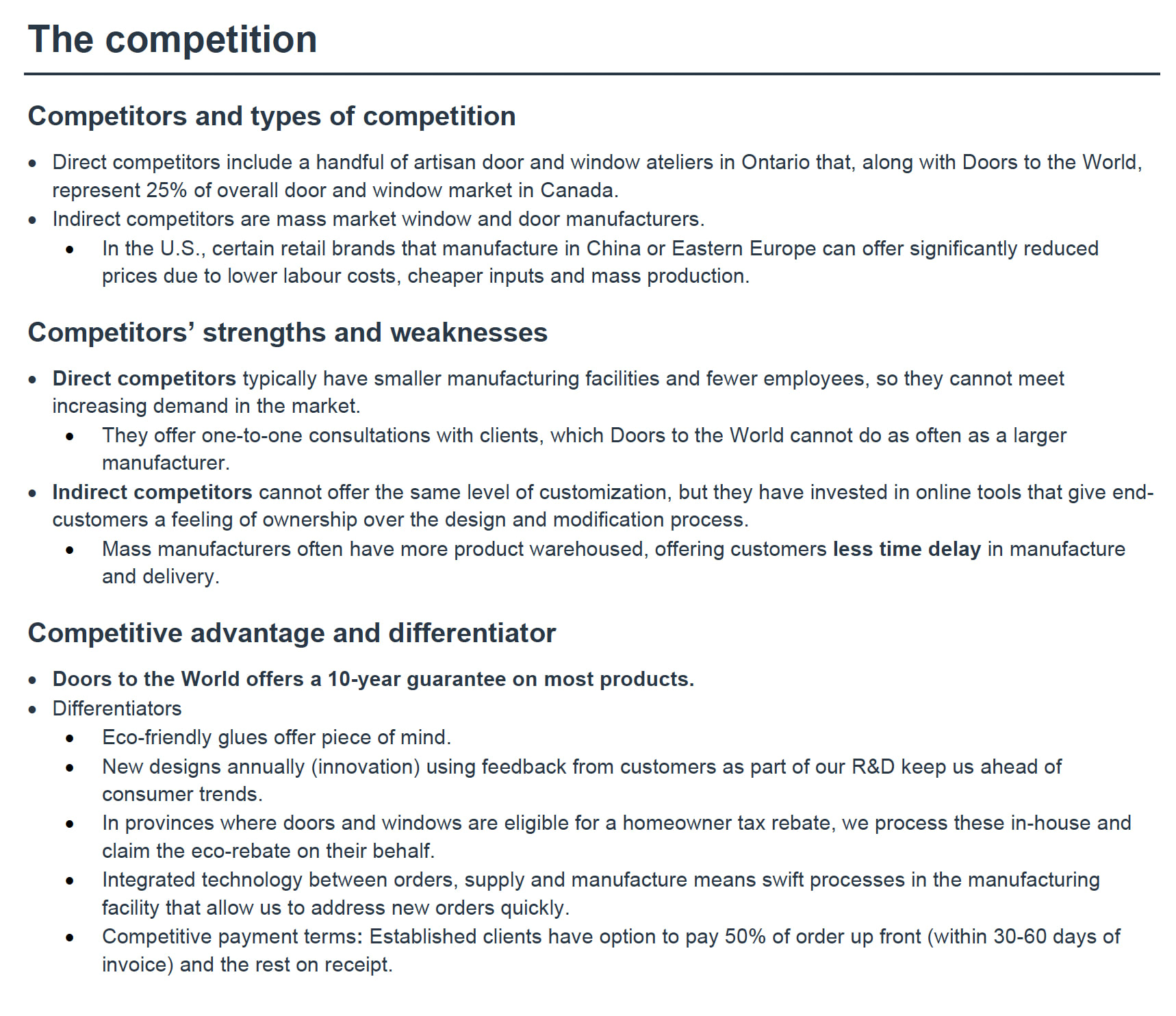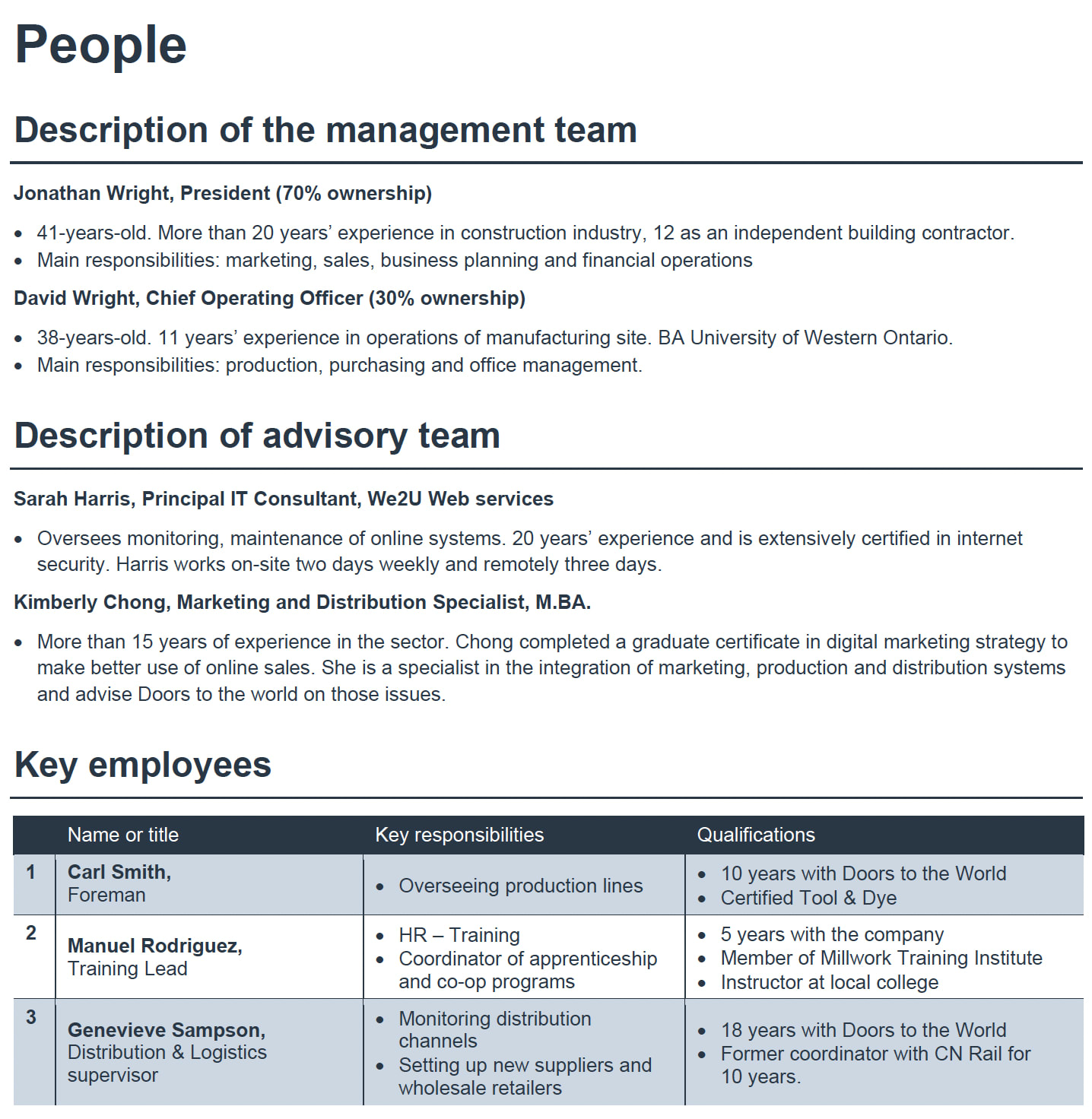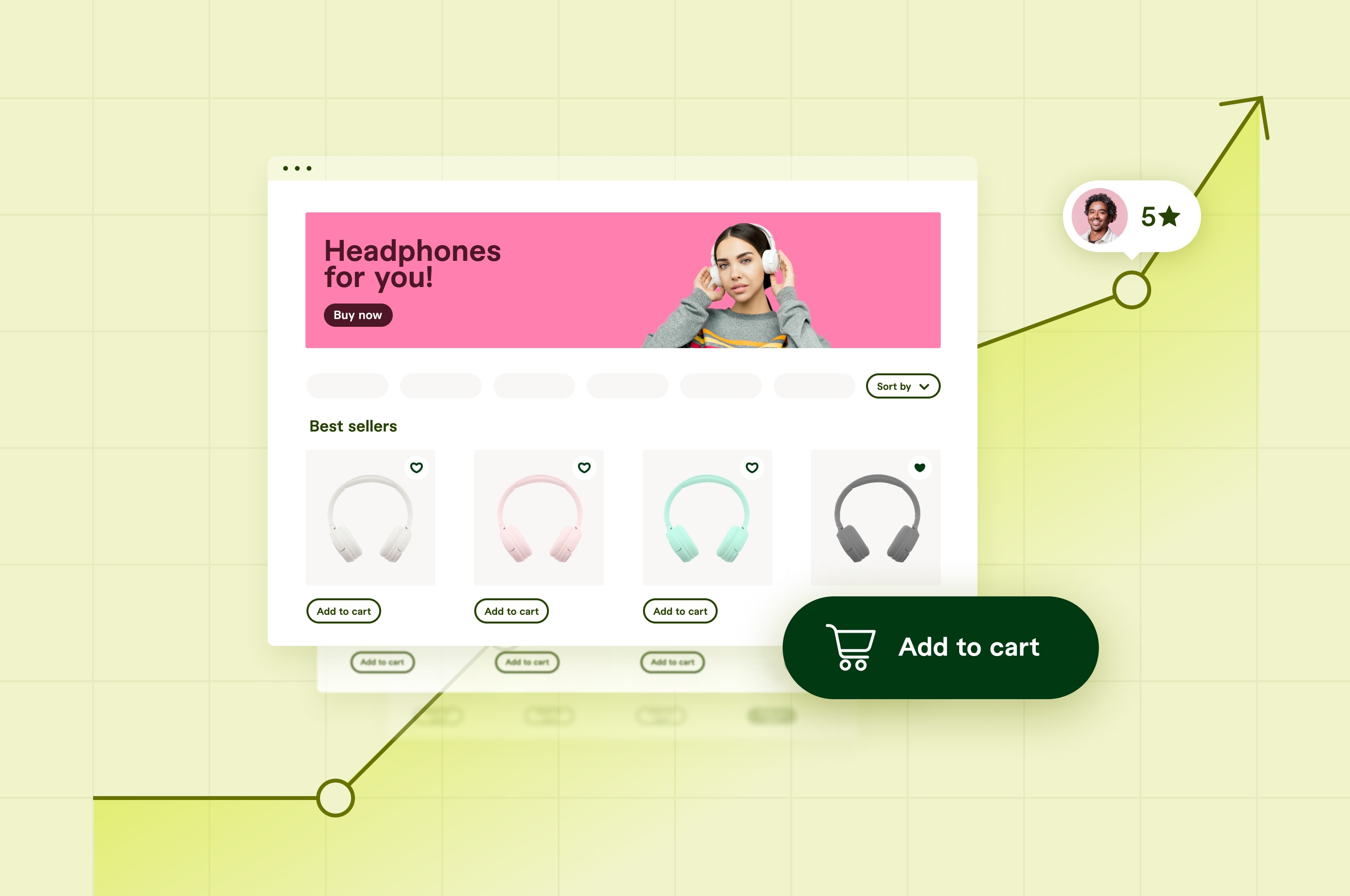How to Build an Ecommerce Business Plan for Your Startup (Template Included)
Use our guide to easily create the perfect e-commerce business plan. Then download the free template to start building your plan today.
 July 27, 2023
July 27, 2023 12 minute reading
12 minute reading
The first step in launching a successfulecommercebusiness is writing a successful business plan.
A well-crafted business plan can help you establish a path and course of action, build your brand, and access funding opportunities such as business loans from lenders and investors. But how do you create a business plan? And what should it include?
In this guide, we’ll cover what goes into a well-crafted ecommerce business plan and share a template to help you get started in no time.
What is a business plan?
A business plan is a document that acts as a blueprint to how you’lllaunch, run, and grow your ecommerce brand. The plan outlines key elements, such as your product strategy, financial resources, company structure, and more.
You can make your business plan as simple or detailed as you want, but a comprehensive, formal road map ensures your hard-earned investment doesn’t easily disappear.
Plus, having a structured way to lay out yourecommerce business ideasand thoughts makes it easier to share your plan with people who can help you succeed.
Writing a formal ecommerce business plan lets you:
Communicate your goals and vision of the present and future
Have a comprehensive understanding of what it will take to build a successful ecommerce business
Lay out your core value proposition and how you intend to deliver it
Show existing demand for the value you want to offer
Prove your idea is viable in the market
Show potential investors why they should support your business
Offer an easy way to communicate your vision to potential new hires while building their confidence in your business
Give potential partners a way to identify whether your business is a good fit before collaborating with you
Foresee, plan for, and avoid failure and other predictable consequences.
Minimize the risk your company is exposed to, making success more likely
With these points in mind, let’s review the most common elements to include in your plan to create a functional ecommerce business.
Hire ecommerce talent to market your store
What to include in a ecommerce business plan
Whether you want a lean startup plan featuring the key points of your business or a longer, traditional plan with full details, there are some things you can’t leave out.
Besides a cover page with yourbusiness logo, name, and contact details, here are 10 fundamental elements to include in your ecommerce business plan.
1. Executive summary
Write an executive summary to describe your concept and give some context to your business.
This section acts like an elevator pitch and is what people often read first. Give a good overview of the entire plan and how you plan to make the business a success.
Keep it succinct—no longer than a page or two—to entice potential partners and investors to keep reading.
Generally, it’s easier to write the executive summary after you’ve thoroughly researched all aspects of your business.
The executive summary should address essential aspects like:
The overall business concept
Your vision or mission statement
The products or services you plan to offer and their pricing
What differentiates your products or services
Who will manage and work for your business
Your current and/or projected financial standing
How much money you need and what you’ll use it for
The last two points are key for potential investors or lenders. Include the specific amount you need, how you plan to use the money, and how investors will benefit.
Alex McIntosh, CEO and co-founder ofThrive Natural Care, a mission-based skin care brand, proudly states his impact-focused mission on his business plan and ecommerce site.

“There are a lot of great, natural skincare companies out there, but none that have an impact-focused mission,”McIntosh writes in his business plan’s executive summary.
“We are a public benefit corporation, so everything we do has to be mission-centric. Our business plan also puts the customer first, so that informed the products we developed and formulas that work with the skin to support health rather than superficial quick fixes. We also needed to come up with a plan for reaching our customers broadly but also tell our rich and unique story.”
Explore Fiverr’sprofessional business writing expertsto develop a concise executive summary for your ecommerce business.
2. Business/company description
Introduce your business by explaining who you are and what you plan to do. Potential investors, lenders, or partners want to see how your business is different from other ecommerce companies.
For example,Saie, an online beauty retailer, shares its business idea and why it exists in a few short sentences.

Clarifying these details ensures you highlight your company’s intangible facets, including principles, values, and the culture you want to create.
Give an overview of your industry then describe how your business will succeed. That way, investors or partners can determine whether to work with you and/or invest their money and time.
Some practical things you can cover in this section include:
The history or background of your business
Your business structure (sole proprietorship, limited liability company, or general partnership)
A description of the wider industry and where your business fits into it
Your vision and mission statement
The nature of the business and what you offer
Your target customers and how you’ll provide them with value
Your current team and future hires you might need as you grow (plus experience level and salary estimates)
You’ll cover all these in greater detail later in your plan, so don’t go into excessive detail about them here. Use one or two paragraphs to show why you should be the source of your product or service, why people should choose you over your competitors, and why your vision will succeed.
Keep it clear, simple, and realistic so readers should leave with a solid understanding of your vision, what your business does, and the problem you’re solving.
3. Goals and objectives
In this section, you’ll state the goals and objectives you’re trying to achieve and how you intend to achieve those targets.
Define your short-term, medium-term, and long-term goals, ensuring they’re SMART:
Specific: Have clear, specific outcomes in mind.
Measurable: Know what metrics to use to evaluate the accomplishment of your goals.
Achievable: Create a goal you can achieve or accomplish successfully.
Realistic: The goals should be relevant to your business.
Time-based: Have a timeframe for when you want to achieve the goal.
SMART goals ensure you take actionable steps toward improvement, measure your outcomes, and ultimately achieve scalable success.
For example, you could have a short-term goal of decreasing bounce rates by 20% within 10 weeks to reach a long-term goal of growing conversions by 40% within 12 months.
4. Market analysis
Next, analyze the market you’re entering.
Describe its landscape and identify your target market. Find out the strengths and weaknesses of the market and how your business will fill them.
For example, Erin Banta, co-founder ofPepper Home, an ecommerce business that provides sustainable custom-made home goods, identified a gap in the custom home goods market and built their business plan around it.

“We discovered most shoppers traditionally didn’t have access to custom home goods,”says Banta.“So, we simplified the custom décor ordering process and offer stylish, affordable options to help shoppers dramatically transform a room with just a few key pieces. Our target audience is anyone who wants to personalize their space in a stylish yet affordable way, with both form and function as a priority. Our customization features and best in class product lead times have proven our initial success.”
Market analysis requires some research to get data about:
Your target audience
Market size and dynamics
Potential opportunities
You can find this data online or in places like industry organizations and related publications, reputable news outlets, or government statistics offices.
Market analysis gives you:
Confidence to decide what products to roll out that will sell and give value to your target customers.
Updated information on current industry trends and what the market will look like in the next five years.
Enough data to know about your market and win investor trust.
If you need extra help with market analysis, you can get amarket research expertthrough Fiverr to do it for you.
5. Competitive analysis
Conduct a competitive analysis to get and showcase information about competitors in your niche or industry and outline how you’ll set your business apart from theirs.
You can list the names of your direct competitors and specify exactly what you’ll do to differentiate your business and win loyal customers.
NakedWardrobe, a global womenswear brand, differentiates itself in a highly competitive market by offering its target customers affordable, timeless luxury basics.
“In our business plan, we had a shared vision of creating a carefully curated, high-quality clothing brand at an affordable price point,”总统说Shideh Kaviani ofNakedWardrobe.“We sought to create affordable luxury basics that are timeless, with the highest quality textiles and fit. Today, we are leading the market in affordable luxury and empowering women to feel confident by providing fashion that feels like second skin.”
Conducting competitive analysis helps you find data about:
Your direct and indirect competitors
The markets and segments your competitors serve
Benefits the competition offers
Their products and services
What competitors’ customers buy from them
Promotional and pricing strategies
Competitors strengths and weaknesses
How you’ll stay ahead of the pack should other businesses enter the fray
You can also conduct your own primary research by visiting their physical stores or sites and completing an order.
Analyze the information you find to identify any market segments or gaps your competitors have overlooked and the user experience on their sites.
Detail everything you find about your competitors and your competitive advantage in the business plan. That way, you’ll persuade the reader that you’re knowledgeable about the competitive landscape and your idea has a clear advantage in the market.
Here’s an example of what a competitor analysis section would look like:

Source:BDC
6. Organizational structure
This section gives an overview of your company, such as its historical background—owners, when it was founded, and legal structure—and how your business is organized.
Include your organizational chart to reflect the team hierarchy (if you have one) and highlight:
Key members of the leadership and management team
People’s individual skills, experience, and functions with the company
Professional gaps you intend to fill with new hires
Here’s what this section would look like when completed:

Source:BDC
7. Products and services
List the products or services you offer and how your customers will access them.
For instance, if you sell digital products, state whether customers will download or stream the content. If you’ll charge a subscription fee, say whether customers will pay a subscription fee for each content piece or to access the entire content platform.
If you sell physical products online, share what your site will look like and whichecommerce platformyou’ll use, and list each product with its description and pricing details.
Share information about your entire product and service range and how they relate to one another to form your whole offering. If possible, show how your offerings will allow you to cross-sell, upsell, and/or retain customers.
Keep this section as simple as possible, highlighting:
The most compelling characteristics of your product or service.
Your prices compared to the competition.
How your products meet your target customers’ needs.
How your offerings enable you to hit your long-term goals and objectives.
Any patents, trademarks, licensing, awards, or copyright information you have.
Future product or service expansions you plan to make.
Potential challenges or threats to your product or service range.
Save any technical details about your product or service for the appendix section of your business plan.

Want to learn about marketing strategy and logistics? Keep reading.
Ready to start selling?Find an ecommerce specialiston Fiverr to grow your store.
Start selling8. Marketing strategy
In this section, detail how you’ll attract, retain, and grow customers for your business.
市场涵盖了范围广泛的活动和美联社proaches, so ensure you have a clear structure with enough information to show how your planned marketing activities will work.
Some key things to cover in this section include:
Your unique selling proposition (USP)
Product or service positioning (affordable or premium)
Promotional activities to drive brand awareness and traffic to your site
Distribution channels and order fulfillment processes you’ll use
Together with your customer personas, distill the marketing efforts you plan to undertake into a brief outline of how you’ll reach and attract your ideal customer.
Your ecommerce marketing strategy can include using social media tools, such as Instagram Reels or TikTok videos, print campaigns, loyalty cards, and more—depending on your budget. The plan should resonate with your audience and meet them on the platforms they visit.
“We always knew we would design a service-style business that relied on customer retention, satisfaction, and high touchpoints,”says Michael Green, co-founder ofWinona, a female-founded anti-aging wellness center.“We’ve employed a variety of marketing strategies through various platforms to reach target audiences, notably through Facebook and targeted PPC advertising—where our customers browse and shop.”
9. Logistics
This section is critical, particularly if you’ll opt for adropshippingapproach to your online business.
Set out everything you need to operate your business, including your suppliers, facilities, inventory, equipment, and more. This shows you’ve thought through each aspect of your product down to fulfillment and potential issues you might run into that could impact the customer experience.
Present a clear picture of how you’ll start the business and manage day-to-day operations, plus details such as costs, delivery options, and estimated timelines.
10. Financials
All the theory you’ve covered so far means little without numbers to back it up.
Include information about your finances—cash flow projections, profit margins, forecasting, and more—to demonstrate your business’s financial viability to potential investors or lenders.
The basics to include are:
Any capital you might already have
Potential sales
Cash-flow projection
Profit margins
Customer acquisition cost
Debt ratio
Estimated monthly income and expenditure
Estimated expenses budget divided into fixed and variable costs
Projected balance sheet (assets and liabilities)
Remember, most numbers you’ll include in this section will be based on projections of what you need to start, run, and grow your ecommerce business.
“The most important elements to include in a business plan relate to costs,”says Lou Haverty, owner ofTank Retailer.“You want to accurately estimate your product margins and advertising costs. You want to make the estimated costs higher if possible. If you have a plan that works with higher costs, you give yourself more of a cushion in case you have unexpected costs.”
If you need help structuring your financials section, reach out to Fiverr’sfinancial consultantsto handle the numbers for you.
你成功的电子商务业务
With the elements and steps above, you can create a thorough ecommerce business plan for your startup that will impress your team, key stakeholders, potential investors, and customers.
如果你缺乏时间和带宽来构建你的,Fiverr is here to help.
Our digital services marketplace hosts a wide range of experts offering different business services, including writing, financial consulting, legal services, and more. What’s more, you can manage freelancers, project files, and payments for free on the platform.
Sign up to Fiverrto find abusiness expertwho will build and firm up your ecommerce business plan.




